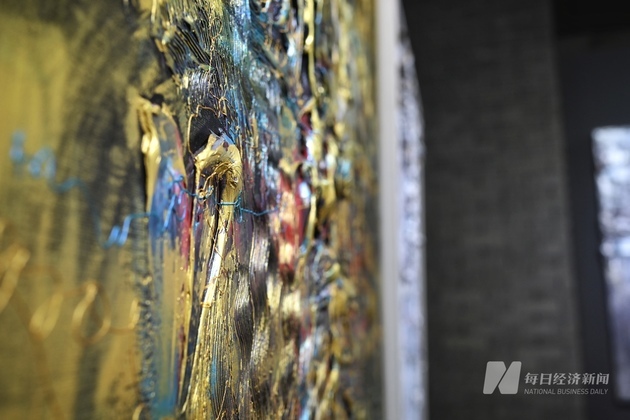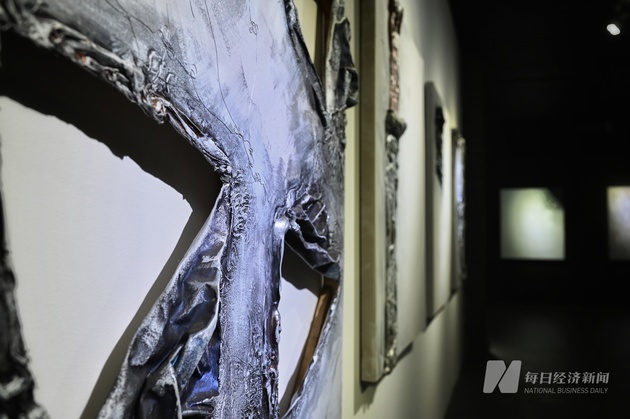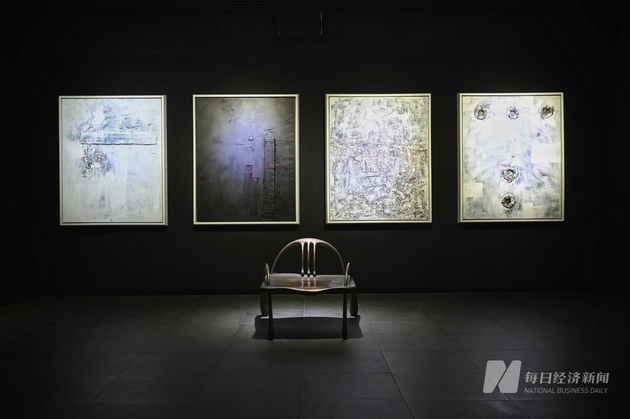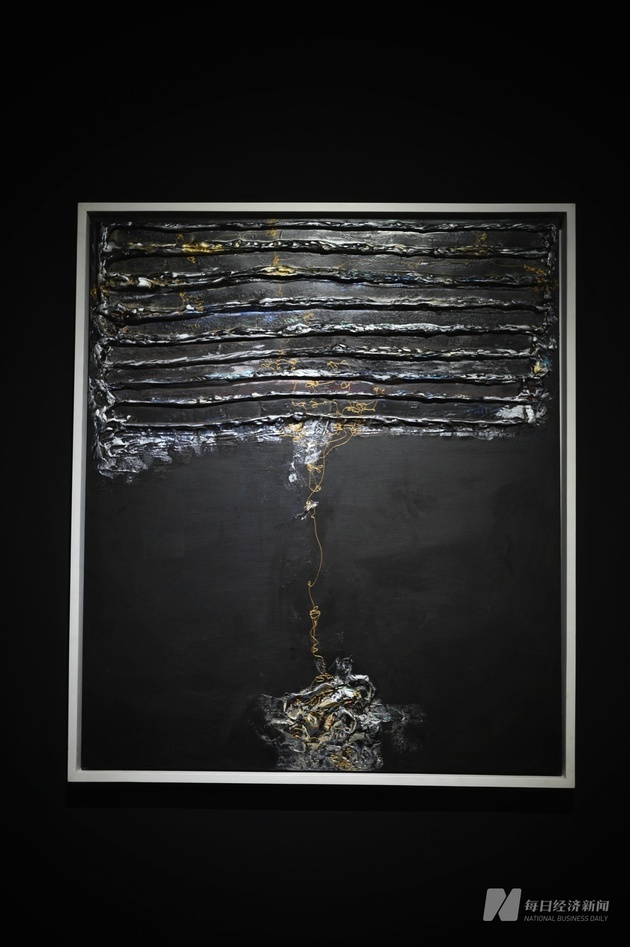As the early autumn breeze sweeps through Chengdu, the intoxicating fragrance of golden osmanthus whispers the secrets of the changing seasons.
"Like the silent poetry of a masterpiece, the golden osmanthus conveys the essence of each season without the need for words," mused artist Xu Liaoyuan, guiding a reporter with National Business Daily through XLY MoMA's verdant pathways.
For nearly two decades, Xu Liaoyuan has been the driving force behind the nation's first design art museum, transforming it into a cultural beacon for Chengdu and beyond. Here, young artists have been discovered and given a voice; here, avant-garde exhibitions have been born, shaping the tides of artistic trends.
For this artist, who prefers the quiet life amidst the city's hustle, the challenge of new artistic languages and mediums is a constant pursuit. From polymer weaving and underglaze pottery to glass art and wool brick installations, and now to new media and artificial intelligence, Xu Liaoyuan has traversed various fields with ease, breaking down barriers and creating a world of new sensibilities.
In conversation with Xu Liaoyuan, we journeyed through the realms of Jackson Pollock's action painting, Gerhard Richter's abstract expression, Joseph Beuys's social sculpture, and the expansion of art's conceptual boundaries. To him, the lifeblood of artistic creation lies in the relentless breaking of established forms and the transcendence of the old self.

Photo/NBD reporter Vince Xie
Subverting the established "artistic language"
Xu Liaoyuan's sculptures and paintings, spanning different periods, blend colors and lines in a way that creates a state of both conflict and harmony, offering viewers an art experience that is alien, absurd, and indescribably unique.
His works consistently challenge and subvert the conventional "artistic language". "My paintings and sculptures have holes, bulges, cracks, and lines that grow naturally, completely overturning the rules of traditional painting and sculpture. People are always defining what painting and sculpture are; I am here to break those definitions," Xu Liaoyuan said.
Like Jackson Pollock, who painted from intuition and experience, creating works through a series of improvisational actions that pioneered a new "artistic language" and freed art from traditional European standards, or like Joseph Beuys, who innovatively proposed the concept of "social sculpture," giving birth to groundbreaking artistic practices and greatly expanding the possibilities of art, Xu Liaoyuan effortlessly navigates different artistic media, content, and tools, pushing the boundaries of "artistic language."
Because of this, throughout his decades-long creative journey, he has maintained a vibrant creativity, unbound by any particular school, institution, or circle.

Photo/NBD reporter Vince Xie
In Xu Liaoyuan's view, "Artists should ponder the essence of art and creativity. New media or new technological trends are merely vehicles for artists to freely choose for expression. If an art worker is merely repeating past creative themes and motives within the existing framework (a common issue today), then he is destined to become 'second-rate'."
NBD noticed that in 2023, the total number of exhibitions in China reached 1,485, including 1,006 solo exhibitions and 479 thematic exhibitions.
Regarding the booming art festivals and exhibitions in China in recent years, Xu Liaoyuan noted that many curatorial concepts are still rooted in traditional aesthetics.
"We need to see more fresh, contemporary, and critical artistic languages, instead of constantly repeating ourselves; otherwise, we will only create more second-rate artists and second-rate artworks," Xu Liaoyuan said.
"I hope for more critical and challenging voices in the field of artistic creation, rather than being confined to existing artistic forms or frameworks. Often, some artists' creative motives are too obvious, and under the influence of capital and academic language, the role of art in thought innovation is greatly obscured and distorted," Xu Liaoyuan expressed.

Xu Liaoyuan brings out his "bottom-of-the-chest" sculptures and paintings. Photo/NBD reporter Vince Xie
Art Education should not be utilitarian
For many years, Xu Liaoyuan has been a strong advocate of "object sensibility" and "new cultural relic futurism," which have profoundly influenced modern design and contemporary art.
Beyond his identity as an artist, Xu Liaoyuan also teaches at various institutions, providing a free creative space for many young talents as an educator. Every time at his studio, he leads students in practicing the latest artistic concepts.

Photo/NBD reporter Vince Xie
He has always emphasized that art training should not be divided by specialties, and art education must return to the essence of life. "The essence of education should not be just about scores; an excessive focus on exams squeezes out other functions of education. Only by doing more things unrelated to survival can people feel happiness."
"Our current art education has a clear utilitarian tendency, and 'instrumental rationality' greatly compresses students' creativity, which is very detrimental to the cultivation of future art talents," Xu Liaoyuan shared his observations with NBD.
"In fact, the creativity and innovative ideas of a country or a nation often come from art. Art education is not dispensable; it can give birth to many creative ideas and creative talents. Often, a single thought can develop into a considerable industry," Xu Liaoyuan stated.

Photo/NBD reporter Vince Xie
Finally, when it comes to the development of the cultural and creative industry, Xu Liaoyuan believes that many people's understanding of cultural creativity is actually very narrow. It's not about delineating certain industry categories or creating some symbols or gimmicks to build a cultural creative industry.
"Nowadays, many practitioners in the cultural and creative industry talk all day about business models, how to attract customers, and how to increase exposure, but they don't talk about the essence of cultural creativity. True cultural creativity should be closely related to life practice, and it should have no boundaries. Only by truly understanding the needs of everyday life can one truly find the entry point for cultural creativity."
Email: lansuying@nbd.com.cn


 川公网安备 51019002001991号
川公网安备 51019002001991号





